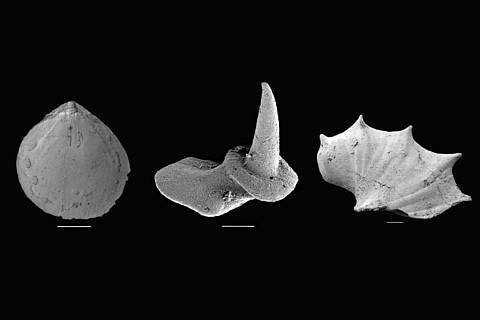Why there was a sudden diversification of species
FAU researchers have discovered how the earth came to have such a rich variety of species
Around 540 million years ago there was a sudden diversification of species on earth. Within a short period of time, countless new species evolved almost simultaneously, becoming the predecessors of today’s main animal groups. But what caused this rapid evolution? Palaeontologists around the world have been searching for the answer to this question for centuries. Researchers at FAU have now confirmed the existing theories that extreme niche formation and tectonic plate movements are responsible for the development of the wide variety of species. Their findings have recently been published in the renowned journal Proceedings of the National Academy of Sciences*.
451 million years ago, an event took place that had a major influence on the evolution of life on earth. This event was the Cambrian explosion, which took place at the beginning of the Cambrian Period over a – from a geological point of view – relatively short period of 5 to 10 million years and saw the evolution of all of the major modern animal groups. To find out what caused this event, researchers from FAU’s Geozentrum Nordbayern evaluated a large database of fossils from the Cambrian Period. They analysed the biological diversity of all known species from this period on a local, regional and global level with the aim of understanding the ecological principles that led to the Cambrian explosion.
The causes? Niche formation and plate tectonics
‘We discovered that while the number of species within local ecosystems increased in the early Cambrian Period, this was not the main reason for the evolution of the variety of species on a global level,’ says Lin Na from FAU’s Chair of Palaeoenvironmental Studies. Instead, the different evolution of different populations was much more important. This is because as species adapted more and more to their environment their ecological niches became more restricted. This meant that individual populations evolved into new species that were adapted to their environments. Carnivores played an important role in this, as Prof. Dr. Wolfgang Kießling, Chair of Palaeoenvironmental Studies, explains. ‘Carnivores kept populations small, preventing too much competition for resources. At the same time, however, they forced species to develop new ways of avoiding being eaten and increasingly sophisticated methods of getting food.’
This biological arms race controlled the variety of species at a local and regional level. However, on a global level there was another factor driving the evolution of species forward: plate tectonics. At the beginning of the Cambrian Period, the supercontinent Pannotia broke apart. From then on, deep oceans separated parts of the land and the different sea creatures evolved separately. ‘We saw a significant increase in provincialism. The species composition found in the continents’ different old shelf seas became more and more different. This could be the main reason that the total number of species increased so considerably,’ says Lin Na.
*Lin Na, Wolfgang Kießling: ‘Diversity partitioning during the Cambrian radiation’, Proceedings of the National Academy of Sciences (USA). doi: 10.1073/pnas.1424985112
Further information:
Lin Na
lin.na@fau.de
Prof. Dr. Wolfgang Kießling
Phone: +49 9131 8526959
wolfgang.kiessling@fau.de
